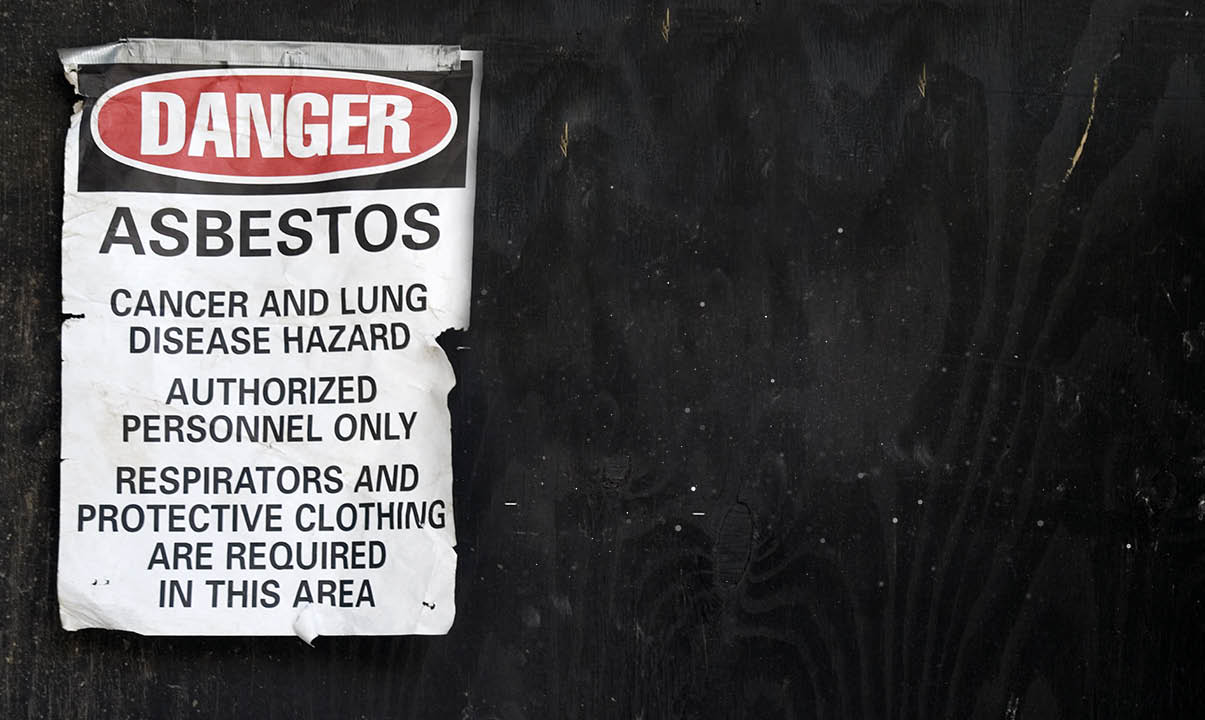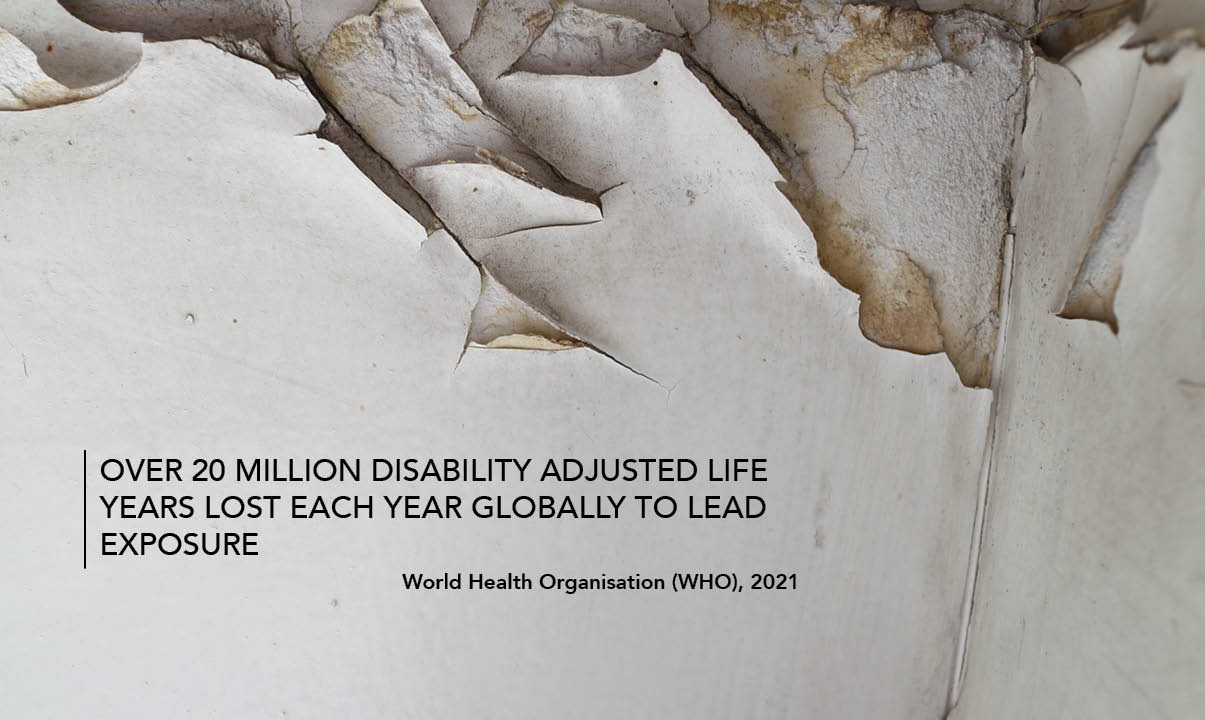HSE Continues To Miss The Mark With Asbestos Management
21 November 2022
The Work and Pensions Committee report published in late April 2022, 'The Health and Safety Executive's Approach to Asbestos Management'.
Featured in The Lucion Group Magazine, published in November 2022, Lucion Group’s Quality and Assurance Director Chris Parr provided an updated insight, into the Government’s recommendations which, though not accepted in full, were partly accepted by HSE.
Despite the import, supply and use of asbestos being banned since 1999 in the UK, 5,000 premature deaths per year are related to asbestos and asbestos-related diseases. Asbestos accounts for more deaths per year than road traffic accidents. The UK death rate for asbestos-related diseases continues to be the highest in the world. Aware of these facts, the UK Health and Safety Executive (HSE) is being accused of failing to put in place the measures required to adequately combat our asbestos legacy issues and adequately protect members of the public from harm. Until, perhaps, now.
The House of Commons Work and Pensions Committee published in April 2022, ‘The Health and Safety Executive's Approach to Asbestos Management', recommendations that the HSE, as part of their review of the Control of Asbestos Regulations and current guidance, must implement stringent control measures in line with other European countries and invest in awareness campaigns as well as more regular audits and investigations of sites to ensure compliance.
The report stated in section 8:
“The latest Control of Asbestos Regulations were introduced in April 2012 and apply to all non-domestic premises (including ‘common areas’ of certain domestic buildings), regardless of the nature of business or industry.28 They are made under the Health and Safety at Work etc Act 1974, address health risks and apply only in Great Britain. Northern Ireland and Gibraltar have separate legislation covering their territories.”
There are an estimated 300,000 non-domestic buildings containing asbestos in the UK. Utilising the current asbestos control measures and increasing in retrofitting and contaminants works in response to the net-zero ambitions allows that more asbestos-containing materials will be disturbed in coming decades.
The Historic Issue of Asbestos
During the periods of 1920 – 1970 and 1971-2000, Europe used 48% and 58% of the entire world’s tradings of asbestos, arguably making Europe the historical global centre of asbestos use; the UK, Germany and France being the highest importers.
In the UK during the 1950s, 60s and 70s there was a ‘building boom’, in which amosite asbestos was used inside buildings as insulation/insulative products and chrysotile asbestos was used in the cement and cladding on the outside of buildings.
Since the ban of asbestos in the UK in 1999 and extensive research conducted into the harmful effects of asbestos, it has long been recognised that the disturbance of Asbestos Containing Materials (ACMs) in older buildings can lead to harmful fibres being released, with dangerous health risks to individuals.
The Cost of Getting it Wrong
Airborne asbestos fibres that are small enough to reach the deep lung tissue have no way of being pushed out via breathing so the body has to use other methods to get rid of them.
The main method is to try and dissolve the foreign body with acids, however, some asbestos is resistant to acid. As a result, the acid damages the tissues surrounding the asbestos fibres. This causes scar tissue and other medical effects known as asbestos-related diseases.
The current acceptable level of airborne asbestos fibres (HSE clearance indicator) used to declare area(s) of a building safe for normal occupation following licensed asbestos removal, is less than 0.01 f/ml. The HSE defines licensable work in relation to Control Limits whereby risk assessment cannot clearly demonstrate that airborne fibre levels will not exceed 0.1f/ml averaged over a 4 hour period or 0.6f/ml averaged over a 10 minute period. Many European countries and closest neighbours introduced far stricter controls. For example, the Netherlands updated its occupational exposure limits to 0.002 f/ml in 2014 with the intention of lowering it even further to 0.0003 f/ml in the future. Despite ample evidence suggesting that the current HSE clearance indicator used is inadequate, it has remained the same for the past 30 years.
The Current Asbestos Regulations
There are strict HSE and legal duties placed on people (‘Duty Holders’) in charge of public buildings aimed at reducing the risks to health that asbestos containing materials (ACMs) pose, and there should no longer be any excuse for anyone being exposed to potentially dangerous levels of airborne asbestos fibres in any building.
Current UK policy considers that asbestos that remains in good condition and is unlikely to be damaged or disturbed is not a significant risk to health as long as it is properly managed. Only when ACMs are disturbed or damaged is the risk of exposure increased through the release of airborne fibres. As materials in these buildings inevitably deteriorate over time, many campaign groups and industry professionals argue that a policy of waiting for materials containing asbestos to deteriorate before removing them is not sufficiently proactive in the management of ACMs, allowing unnecessary risk to remain in place.
Many organisations call for the complete removal of asbestos from all buildings nationwide. However, to action this would incur great cost. According to Think Tank ResPublica, an estimated six million tonnes of asbestos remain inside 1.5 million buildings in the U.K. To remove these potentially lethal materials completely could result in many schools, hospitals, and other public buildings being shut down due to the soaring associated costs with the complete removal. The cost to councils and the taxpayer arguably would be crippling and unmanageable.
Significantly, the Work and Pensions Committee recommendations, which the government stated in August 2022 that they will not be accepting in full, supported the move, recommending that the HSE, should produce a robust, system-wide strategy to remove all asbestos containing materials from non-domestic buildings within the next 40 years (2062).
Adequate Funding
To ensure the HSE could have met the recommendations, the Work and Pensions Committee encouraged the Government to provide adequate funding to the HSE and strongly encouraged the enforcement of the regulations as well as implementing an effective data collection and asbestos digital register. During the past few years, especially during the COVID-19 pandemic where buildings have not been occupied, enforcement of the regulations and re-inspections have slipped.
Rt Hon Sir Stephen Timms MP, Chair of the Work and Pensions Committee, said:
“This is no time for laissez-faire. The Government needs to fund the HSE properly to allow it to reverse the decline in enforcement activity seen in the decade before the pandemic and ensure that asbestos, and its removal, is managed safely and effectively.”
Had the recommendations been accepted in full and enforced by the HSE and Government, asbestos management would have already started making a significant impact in combatting ‘one of the great workplace tragedies of modern times’.
Tighter Controls on Asbestos Industry Professionals and Duty Holders
In addition to the above, the Work and Pensions Committee recommended that the HSE look to consolidate, tighten, and simplify the current categorisation of asbestos works as part of its 2022 statutory review of the Control of Asbestos Regulations. Importantly, the committee recommended that HSE makes it mandatory for all people conducting asbestos surveys to be accredited by a recognised accreditation body, such as UKAS.
What is UKAS Accreditation and Why is it Important?
Established in 1981 under the name National Testing Laboratory Accreditation Scheme (NATLAS), now known as the United Kingdom Accreditation Service (UKAS), UKAS are a government appointed agency authorised to assess the competency and abilities of organisations who provide certificates in the testing, inspection, and certification (TIC) industry. This includes the asbestos industry.
Organisations bearing UKAS accreditation have undergone rigorous audits and reviews that assess many aspects of the business including; general management, policies and procedures, and testing of individual team members competency. This assessment is conducted annually to ensure the service you, the customer, is getting reliable and trusted services from your provider.
The Work and Pensions Committee encouraged the HSE to assess the impact of making it a legal requirement for building owners or occupiers to ensure the asbestos analysts they commission are accredited making it illegal for asbestos removal contractors to do so.
The recommendations that have been accepted or rejected are listed as below:
- Using recommendations from the enquiry to inform the Post Implementation Review and develop research - Accepted
- HSE’s asbestos related research - developing new methods of information capture to determine duty holder compliance and inspection programmes - Accepted
- Central register of asbestos in non-domestic buildings - Rejected
- New exposure levels - HSE to review evidence and determine if requirement for new workplace limits - Accepted
- Information sharing - educating duty holders to manage the risk and reduce worker exposures - Accepted
- Regulatory activity - HSE focus to commit to programme of inspections - Accepted
- Using outcomes from duty to manage inspections to inform future activities - Accepted
- Communications and increased campaigns targeting the risk from work with asbestos as part of the UK’s net zero agenda - Accepted
- Notifiable and non-notifiable work - HSE will explore further the categories of work within the regulations - Accepted
- Use of Asbestos surveyors - HSE to engage with UKAS and stakeholders to further reinforce guidance - Accepted
- Asbestos strategy - a fixed deadline of 40 years for removal of all asbestos was seen as a concern - Rejected
- Occupation recorded on death certificates could introduce bias and would require buy in from many Government Departments - Rejected
Lucion is UK’s market-leading, independent and impartial supplier of asbestos testing, inspection and management services, we continue to stand by the recommendations presented in ‘The Health and Safety Executive's Approach to Asbestos Management’ report put forth by the House of Commons Work and Pensions Committee.
About The Author
Chris has over 12 years of experience specifically monitoring, managing and leading on quality assurance for the Lucion Group, having joined us via Lucion’s acquisition of AOH Ltd in 2011. Chris was integral to the successful creation of a strong QHSE culture at Lucion Services, where he maintained an integrated Quality Management System (PAS 99 certified by BSI) to include ISO17020, ISO17025 (requirements for asbestos testing, and inspection accreditation by UKAS), ISO9001, ISO14001 and ISO45001 (certified by BSI).
Moving to his role of Quality & Assurance Director for the Lucion Group, Chris will utilise his experience gained and integrate our strong culture for integrated quality management across our Lucion Group portfolio of companies, working closely with the Lucion Group Technical Director and our individual business leaders.
Chris Parr
Group Quality and Assurance Director
E: chris.parr@lucionservices.com
T: +44(0)345 5040 303
Linkedin: Chris Parr
Tool Box Talk: Asbestos Awareness
As part of Lucion’s Take Care Be Aware initiative, we actively take care of our health and safety responsibilities, with continuous awareness of our commitments to knowledge share and educate.
In doing so we have created a ‘toolbox talk’ on asbestos awareness to raise awareness of the hazards associated with asbestos-containing materials, enabling safety professionals to share knowledge and overall save the time and effort in producing them for you and your teams.
_2.png)
Download From NexGen
Asbestos Management Plan: 12 Step Checklist
Struggling to get started with your Asbestos Management Plan? Download our free 12 step AMP Checklist Guide and take the first step to safeguard your teams, contractors, and reputation.
No Sign-Up Required
IMPACT Magazine
Industry news delivered by Lucion Group and its subsidiary companies.
Issue 2 May 2023
No sign-up required
Why The UK Needs Tighter Asbestos Controls
The white paper has been designed to provide important information to those who work in schools, in particular those who are responsible for the maintenance of the property and teachers. Our white paper outlines why the UK ought to adopt measures in force in other European nations, who already share the same overriding EU legislation Directive 2009/148/EC on the protection of workers from the risks related to exposure to asbestos.
_1.png)
Download From NexGen


 NexGen
NexGen












